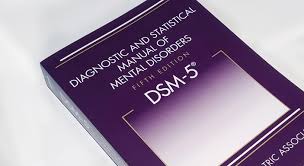Comparing Bipolar Disorder vs Borderline Personality Disorder
Bipolar disorder and borderline personality disorder are two mental illnesses that can cause significant disability and disruption in someone’s life. Despite being commonly grouped together or even used interchangeably in movies, TV, and other pop culture references, they are two separate and distinct illnesses that have different diagnostic criteria and require different treatments. Find out more about how psychiatry distinguishes these two disorders and how families, treatment organizations and communities can help support individuals with these diagnoses.
What is the difference between bipolar disorder and borderline personality disorder?
Bipolar disorder is a mood disorder, and borderline personality disorder is a personality disorder.

Bipolar disorder is a mood disorder, and borderline personality disorder is a personality disorder.
A common feature of bipolar disorder is recurring episodes of depression. Many people with bipolar disorder present a lot like people with unipolar depression, or major depressive disorder: they feel sad, lose interest in activities, feel worthless, have trouble concentrating, etc. To be diagnosed with bipolar disorder, you must also have experienced at least one episode of mania. An episode of mania is characterized by an elevated mood, heightened energy without the need to sleep, racing and/or grandiose thoughts, and impulsive behavior. For most people with a bipolar diagnosis, about 75 percent of the time they are experiencing disability from the illness, they are in depressive episodes.; however, having a history of one manic episode ever means that a person has bipolar illness even if the person is currently depressed.
Borderline personality disorder is not a mood disorder. It is classified as a personality disorder. The symptoms of borderline personality disorder can result in mood problems, but the illness is not defined by changes in mood. The symptoms of borderline personality disorder are relational.
For all types of personality disorders, we consider how a person interacts with others through personality constructs, like dependency for example. We all at certain times are dependent on a parent, partner or friend. At other times or in different situations, we relate to that same person differently. We might be more independent or even competitive. A person without a disorder also likely would not relate to a friend and a parent in the same way.
People with an untreated personality disorder tend to use the same approach, or personality construct, to cultivate relationships repeatedly. This lack of diversity in interacting with other people can lead to relationships that are confusing, difficult, and extreme. In turn these unstable relationships or resulting isolation can cause depression and anxiety. In fact mood and anxiety disorders frequently co-occur with personality disorders.
However, for individuals with bipolar disorder, for the most part, there is little causal relationship between interactions with other people and the onset of a mood episode. But with borderline personality disorder, interactions with other people or expectations about relationships are what drive the illness and result in mood and anxiety problems.
Which disorder is more serious?
The American Psychiatric Association classifies and issues standard diagnostic criteria for mental illnesses in the Diagnostic and Statistical Manual of Mental Disorders, or DSM. In older versions of the DSM, personality disorders were classified as “axis II” problems, while mood and thought disorders were classified as “axis I” disorders. Because they were relational, we used to think that personality disorders were not as “serious” or disabling as depression, bipolar disorder, or schizophrenia. However, we know from many outcomes studies that untreated personality disorders are quite disabling. Therefore, one of the most important changes in the most recently revised and published edition of the DSM (DSM-5) was removing the ordinal hierarchy and classifying personality disorders as equal to mood and thought disorders in terms of impact and disability.

DSM-5 classifies personality disorders as equal to mood and thought disorders in terms of impact and disability.
Why are bipolar disorder and borderline personality disorder often confused or conflated?
Sometimes interacting with someone with a bipolar diagnosis compared to interacting with someone with a diagnosis of borderline personality disorder may feel similar. You may feel like you never know what to expect from one day to the next, with the person’s mood or behavior being extremely variable. The origins of that unpredictability are different, but the effects on communication and relationships can be comparable.
If you have a relationship with someone who has bipolar disorder, when they experience an untreated manic or hypomanic episode, they may be euphoric, feel like they’re on top of the world, they’re the life of the party, they express love for you, etc. But when that episode ends, or maybe even transitions into a depressive episode, your interactions with that person may change dramatically.
Similarly, relational interactions with people with untreated borderline personality disorder may feel extreme. When they feel safe and secure in the relationship, they may express love for you, seem excited to spend time with you, and be very supportive. That behavior could look a lot like someone experiencing a manic or hypomanic episode. However, if the instability in the relationship emerges, that behavior can quickly flip into a very negative social interaction.
So the lack of predictability and experiencing what feel s like extreme shifts in how a person with bipolar disorder or borderline personality disorder interacts with you may feel similar from the perspective of a family member or friend.
How do you diagnose bipolar disorder or borderline personality disorder?
If you or a family member are experiencing symptoms of a mood or personality disorder, the best next step to getting better is to make an appointment with a psychiatrist for diagnostic assessment.
In addition to sharing historical experiences, feelings, and thoughts with a good clinician, some patients may be referred for formal psychological testing for diagnostic purposes. There are psychometrically normed instruments, like the Minnesota Multiphasic Personality Inventory, that diagnostic professionals can use to detect traits of a personality disorder, and there are similar instruments that can help a professional determine if someone has ever had a manic episode (which would indicate bipolar disorder) even if that person is not currently symptomatic. Test results can be useful, but developing a trusting relationship with a skilled diagnostic psychiatrist is the best way to arrive at a good understanding of what someone may be experiencing and tools to help them get better.
A person can be diagnosed with both concurrently. Among patients who are in inpatient hospital settings, 40 percent of patients with mood disorders have co-occurring borderline personality disorder. The best predictor for recovering from a mood or thought disorder is having a strong social support network. Having an untreated borderline personality disorder diagnosis can make it difficult to maintain a strong support network, and that may increase your risk of symptomatic episodes escalating to crisis situations that require hospitalization.
Substance use can complicate diagnosis. If someone is intoxicated, withdrawing or dependent on a substance, the resulting symptoms can mimic both bipolar disorder and borderline personality disorder. For example, if you are using cocaine, your symptoms can look very similar to a manic episode of bipolar disorder or an extreme positive interpersonal relationship of borderline personality disorder. In these situations, a professional likely cannot make an accurate diagnosis. The patient will need to achieve a period of sustained sobriety before an accurate diagnosis can be made.
What is the treatment for bipolar disorder and how is it different from the treatment for borderline personality disorder?
The treatments for bipolar disorder and borderline personality disorder are totally different.
People with bipolar disorder, especially when they are experiencing mania, almost always require medication to get better. We know that untreated mania is neurotoxic. Prolonged, untreated mania can lead to an irreversible decline in cognitive ability. Therefore an effective medication strategy is incredibly important for people with bipolar disorder. People with bipolar disorder also often benefit from psychotherapy modalities like cognitive behavioral therapy (CBT). Consistent sleep patterns and active living habits also play a significant role in managing bipolar disorder and other mood disorders. Other therapies that focus on support systems such as social rhythm therapy and interpersonal therapy may be equally important.
Borderline personality disorder, on the other hand, does not respond to medication. People with borderline personality disorder often are prescribed medications to help manage mood and anxiety problems that result from the disorder, but medications do not affect or resolve the defining relational symptoms of the illness. Medications may also be prescribed to help decrease the likelihood that someone with borderline personality disorder will engage in self-injuring behaviors like cutting, as suicide is the major safety concern in untreated borderline personality disorder.

Bipolar disorder almost always requires medication to get better.
Borderline personality disorder does not respond to medication.
The treatment for borderline personality disorder is all therapy. Research indicates that psychotherapy modalities like dialectical behavior therapy (DBT) and acceptance and commitment therapy (ACT) can be effective in treating borderline personality disorder.
Because the treatments for bipolar disorder and borderline personality disorder are so different, it is important to get an accurate diagnosis and select a treatment program with specialized evidence-based expertise in treating your illness.
What are the early signs of bipolar disorder? How do they compare with the early signs of borderline personality disorder?
Research indicates there is likely a genetic component to both bipolar disorder and borderline personality disorder. So in families where someone has one of these diagnoses, it is important to pay attention to children in the family to be able to identify warning signs that they may also be developing that illness. Just like with any medical problem, the earlier that preventive measures begin, the better.
For children with a genetic predisposition for bipolar illness or borderline personality disorder, families can help them adopt regimented healthy lifestyles. They need eight hours of uninterrupted sleep every night without variation, and physical exercise should be part of their daily routines. If adolescents start showing symptoms of problems with thinking or social interactions, those problems should be addressed in psychotherapy or family therapy as soon as possible. And it is especially important to talk about the specific dangers of the use of alcohol, marijuana and other drugs for individuals with a genetic predisposition to mental illnesses.

Families can help children with a genetic predisposition for bipolar disorder or borderline personality disorder develop regimented healthy lifestyles.
Childhood maltreatment and trauma are strongly associated with the development of both disorders. It is therefore important for communities to develop effective policies, systems and primary prevention strategies to help protect children from maltreatment. When maltreatment does occur, communities should be prepared to provide effective early intervention to help children develop healthy coping skills and support networks as protective factors against developing disability from mental illness in the future.
By definition, you cannot be diagnosed with borderline personality disorder until you are an adult, which makes it difficult to identify the diagnostic early warning signs of the illness. When you are an adolescent, an important developmental milestone is determining what your personality will be, and you do that by experimenting with different personality traits in different situations. Even if an adolescent tends to use one personality approach frequently or without much variation, that approach may not stay static as the adolescent matures developmentally, so it is difficult to label adolescent relational behavior as “disordered.”
Children and adolescents with bipolar disorder show more warning signs early in the development of the illness, which is called the “prodrome.” Prodrome symptoms can include: hearing voices others can’t hear, magical thinking (e.g. a child believes if she spins around three times she has special powers), sleep problems, or a precipitous change in academic performance or social groupings. Individually, none of these prodrome symptoms is a sure sign of bipolar illness; each symptom could be caused by myriad factors or events of childhood or adolescence. Looking at the entirety of behaviors and symptoms is important in determining risk for developing bipolar disorder.
What are the risks and outcomes for people diagnosed with bipolar illness or borderline personality disorder?
Both disorders are difficult illnesses to treat and manage. However, the field of psychiatry is advancing, and new treatments are being developed and studied. Both populations are at high risk of suicide, particularly if alcohol and substance use are involved. To prevent suicide completion, individuals with either diagnosis should not have access to a firearm, and firearms should not be present in the home.
People with bipolar illness are at increased risk for chronic health problems like heart disease, so healthy eating and active living should be an important part of daily routines. Many mental health treatment programs are beginning to include a healthy living curriculum as part of an integrated approach to improving both physical and mental health outcomes.
While bipolar mania often can be treated effectively with medications, bipolar depression can be more intransigent for some individuals. Newer treatments like transcranial magnetic stimulation are being evaluated for their efficacy and safety in treating recurring or treatment-resistant bipolar depression.
Similarly, for many years psychiatrists and therapists believed no effective treatment existed for borderline personality disorder. However, newer studies show that modalities like dialectical behavior therapy (DBT) can be very effective in treating and managing the illness.
As with most mental illnesses, there is no cure. But individuals with these disorders, if they engage in quality evidence-based treatment, can learn valuable skills and tools for mitigating the pain and disability these illnesses can cause.
Importantly, we should all recognize that individuals with bipolar illness or borderline personality disorder have a medical illness, not some character flaw. They deserve our support and encouragement as they work with their mental health providers to learn to manage their illnesses and live healthy, productive lives in their communities.
